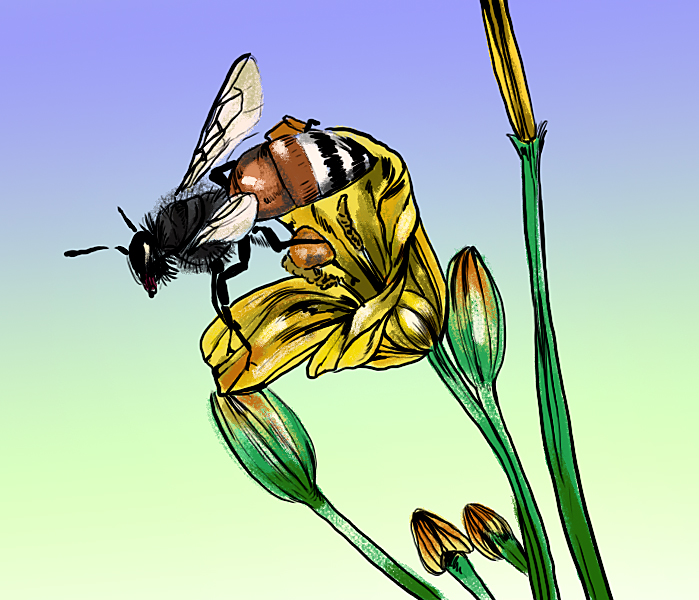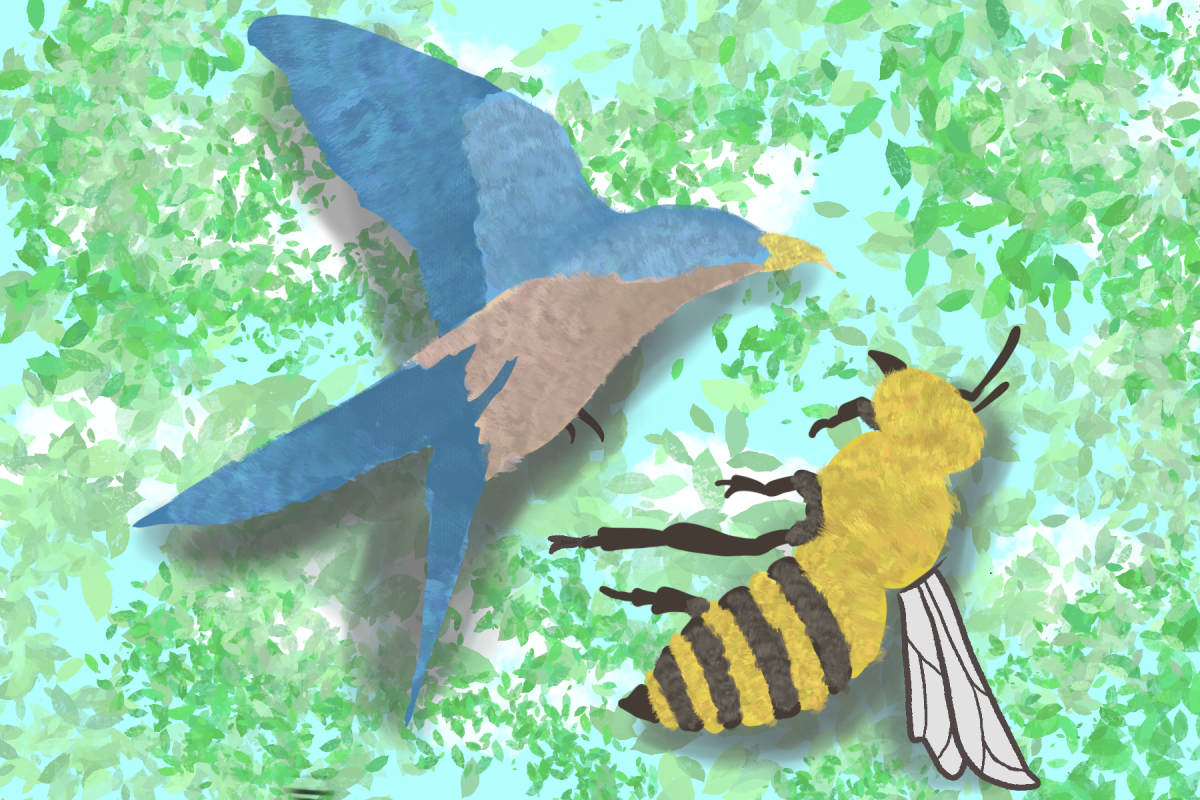There is a beemergeny at UT. If administrators don’t act now, we may be stung by the repercussions.
A particularly aggressive bee population this summer has experts warning Austinites to exercise extreme caution. The University of Texas should improve its monitoring of the campus bee population. Since May, Austin has seen at least three bee attacks, and last August, an aggressive swarm outside Sid Richardson Hall sent a UT student to the hospital. For both students’ and the bees’ sake, the University should take action during these months of peak bee activity before students come back for the fall semester.
“I saw someone running and screaming, and I couldn’t figure out what it was. I thought she’d been assaulted,” said Paloma Diaz-Lobos, scholarly programs director and faculty liaison for the Teresa Lozano Long Institute of Latin American Studies. “I went down the stairs, and I saw more people running under the trees. Then we realized there were swarming bees.”
What Diaz-Lobos saw outside Sid Richardson Hall looked like a scene from an apocalyptic thriller film.
“It was quite frightening to see people running and scared, not understanding what was happening. … We were all locked inside the building,” Diaz-Lobos said.
Students screamed and left their backpacks, and others hid in neighboring buildings, she said.
Many UT students have experienced a bee encounter. Bees zip in and out of trash cans on Dean Keeton, flit around the flowers on West Mall or pester pedestrians outside Littlefield Cafe.
Live bee removal expert Keith Huddle says the summer months are the riskiest times for bee attacks. He says there are about five to 10 bee attacks per year. That doesn’t mean you need to worry about a bee attack, but it does mean people should be careful. Yes, biologists say we can thank the bee pollination for a third of our food, but a bee sting still hurts.
If you get attacked, don’t swat. Do run. It saves the bees, and most importantly, it saves you.
“Protect your face as best you can, and get out of there. The bees are going to chase you only so far,” Huddle said. “The numbers and the aggression can overwhelm you and leave you helpless.”
The face is a prime target for angry, twitching stingers. Bees are actually attracted to the carbon dioxide in our breath.
“Most victims are found with (bees) inside their nose and throat, all the way down into their lungs,” Huddle said. “You could end up with a thousand plus stings. It can be pretty bad.”
Huddle, owner of Keith’s Bee Removal, relocates hives from places such as homes, sheds, trees, buildings and manholes to safer locations. He says that an influx of Africanized bee genes in local honeybees are to blame for the recent aggression and bad bee behavior.
Here at UT, administrators should monitor the bee population to keep track of hives. Huddle says that even if you don’t see a hive, a concentration of bees flying near trees or holes can be an indicator of a hidden hive, containing thousands of bees. If there are swarms or stung students, then live bee removal is the proper step.
Be bee aware. If you see a bee concentration or a hive, report it.
If you just walk by and don’t report it, then the next person might not be as lucky as you.
Having been stung myself, this writer says bee careful.
Laughead is a journalism junior from Houston.





















